Armadillos are pests who love digging up holes in search of food. Their burrowing, however, can cause severe destruction to your lawn and garden or lead to your home’s structural damage. If you have armadillos in your vegetable garden and have no idea how to get rid of them, you have come to the right place.
How to get rid of armadillos? To get rid of armadillos, you need to cut off their food supply and eliminate their hiding sites. Using live trapping and baiting can help catch armadillos while building a fence, and using repellents such as castor oil and vinegar can deter them.
In this article, you will learn more about how to deal with an armadillo menace, including the different types of armadillos, what attracts armadillos and how to repel them, the best products to use and how to get rid of armadillos naturally.
What Is an Armadillo?
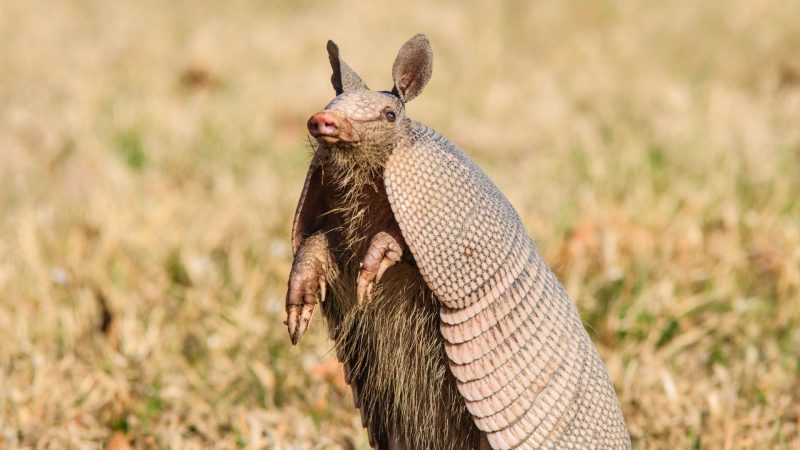
Armadillos are mammal species native to South America. Their name originated from the Spanish word “armadillo”, which translates to “little armored one”. The term refers to the bony shell covering found on the head, back, legs, and tail of these peculiar creatures.
What Does an Armadillo Look Like?
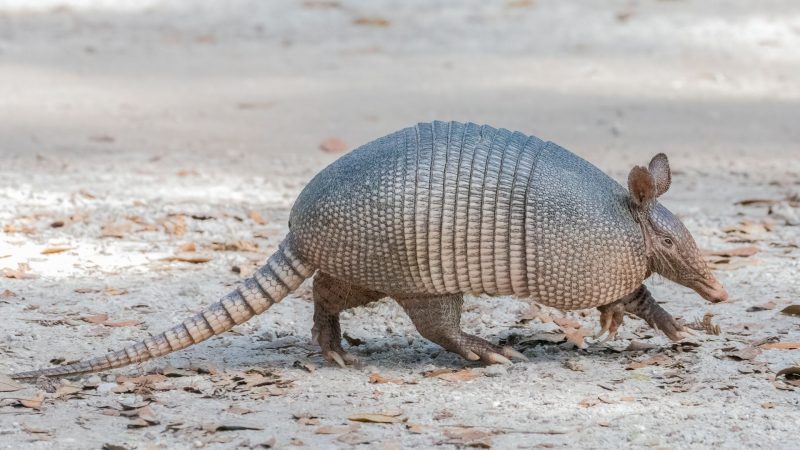
Armadillos come in colors ranging from dark brown, black, gray, reddish, or yellowish.
They have a leathery armor shell covering the top of their bodies, including the head and tail. Their short legs bear long, sharp claws designed for digging, and they have a long pig-like snout and small eyes.
How Big Are Armadillos?
Armadillos range from small to medium-sized and can grow to an average length of around 75 cm (30 in). For instance, the nine-banded armadillo has a height of between 15 cm and 25 cm (5.9 in and 9.8 in). However, the giant armadillo can attain 150 cm (59 in) in length and up to 54 kg (119 lbs) in weight.
Where Do Armadillos Live?
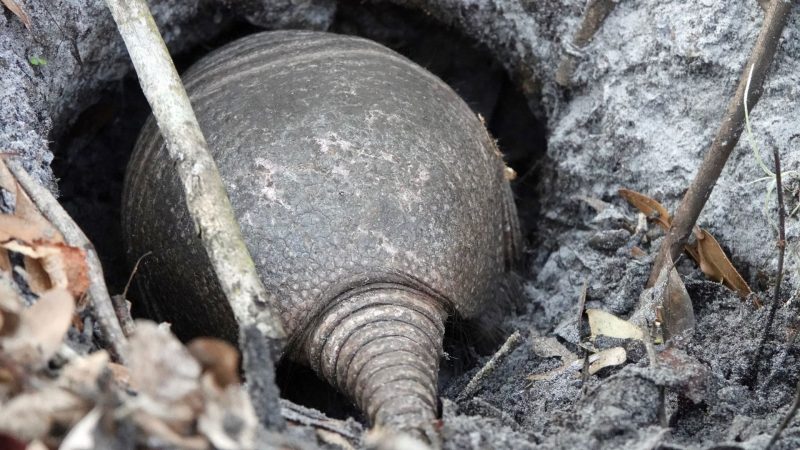
Armadillos dislike the cold, preferring to live in warm, wet environments such as grasslands, rainforests, and coastal dunes with sand or clay soils for easy burrowing. You will find them in golf courses, cemeteries, parks, and plant nurseries. These animals can also build nests using dry grass.
These animals are nocturnal, sleeping for up to 16 hours in underground burrows during the day.
How Long Do Armadillos Live?
On average, armadillos’ life span ranges between 12 and 15 years. Others, like the three-banded armadillos, usually live for about 16 years. That said, some could live up to 20 years, especially if they are in captivity instead of out in the wild.
Do Armadillos Lay Eggs?
Armadillos do not lay eggs because they are mammals. Instead, they give birth to live offspring once annually and always to either identical quadruple males or females. Once armadillos mate, the fertilized egg takes about 4 months before implantation plus an additional 4 months before birth.
Do Armadillos Dig Holes?

Armadillos dig holes in search of both food and shelter. They also climb fences and swim across the water while holding their breath. These creatures can stay inside their burrows for many days, but they must come out to forage since they have minimal body fat and do not store food.
What Do Armadillos Eat?
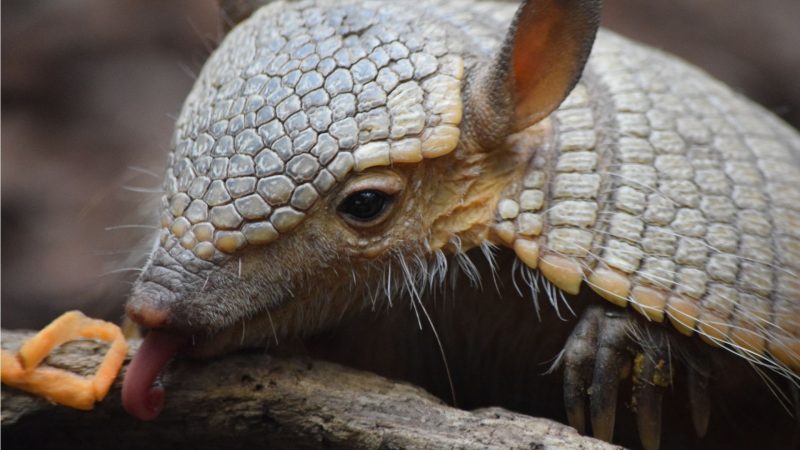
Armadillos eat everything from insects to fruits. At dawn and in the early evening, they can often be found foraging for ants, termites, beetles, earthworms, and scorpions, as well as small reptiles, and amphibians, plus their eggs. They also feed on plants and seeds.
Since they have terrible eyesight, armadillos rely on their superb sense of smell when hunting.
They move pretty fast. Their long, sticky tongues help extract ants and termites from tunnels. Their small, peg-like teeth are ideal for grinding food.
Types of Armadillo
There are around 20 species of armadillo, and some of these have very unique names, such as the “screaming hairy”, the “six-banded”, the “greater fairy”, and the “northern naked-tailed armadillo”.
Out of the 20 species available, nine-banded armadillos are the only armadillos present in the USA. They sport 7-11 bands on their hard shells and are similar to a large house cat. Their length ranges from 24 inches to 32 inches (60 cm to 81 cm), and their weight is between 5.4 kg and 7.7 kg (12 pounds and 17 pounds) for adult males and 3.2 kg and 5.8 kg (8 pounds and 13 pounds) for females.
Some other types of armadillo include:
- Brazilian Three-banded Armadillo. This is the only species capable of encasing itself inside its shell by curling the head and hind feet into a ball to keep off would-be predators.
- Giant Armadillo. This form is the largest armadillo and can weigh about 130 pounds (58.9 kg).
- Pink Fairy Armadillo. This tiny armadillo weighs under 4 ounces (113 grams).
Are Armadillos Dangerous?
Armadillos are not dangerous and you should not be afraid if you come across one in the wild. They are pretty docile and get easily frightened. They are also not dangerous to pets, like dogs, though they can use their sharp claws to defend themselves if cornered.
Are Armadillos Aggressive?
Armadillos are not aggressive even though they are wild animals. Furthermore, they won’t go out of their way to attack you. On the contrary, they are docile and scared easily. Still, when under threat, they could attack both pets and humans.
Do Armadillos Bite?
Armadillos do not bite. They are probably not even capable of real biting because their mouths are quite small, and their tiny peg-like teeth are better suited to grinding. Interestingly, some people consume armadillos since they consider them a delicacy.
Do Armadillos Carry Rabies?
Armadillos are likely to transmit rabies – a dreaded fatal disease – if people handle or consume them. Still, they are considered low-risk transmitters of the disease. What’s more, the risk of contracting rabies from an armadillo in captivity is even lower.
What Disease Does Armadillos Carry?
Fortunately, armadillos’ low body temperature renders them incapable of carrying most diseases. However, they might carry Hansen’s disease (leprosy), and they are low-risk rabies carriers and natural reservoirs for Chagas disease, but armadillos do not carry syphilis.
Though it rarely happens, these diseases could get passed on to humans upon feeding on raw or undercooked meat of an infected armadillo, or contact with armadillos or their excrement. Similarly, they can also transmit salmonella and tapeworms.
Do Armadillos Carry Leprosy?
Some of the armadillos found in the south of the United States naturally contain the bacteria that causes leprosy in humans. As such, there’s a possibility that the infected animals could spread the disease to people. Nonetheless, the risk is extremely low, and most people might not catch the disease.
How Do You Get Rid of Armadillos?
To get rid of armadillos, try using pesticides designed to reduce insect populations (there are no specific repellents or fumigants meant for use against armadillos). Poisons are unlikely to work since armadillos feed on what they forage from the ground, such as live worms, insects, or larvae.
That said, there are various methods you can use to deter or control armadillos, though, their success levels might vary.
Below are step-by-step instructions on how you can get rid of armadillos on your grounds:
Step 1: Once you notice signs of armadillo infestation, try to determine what insects are attracting them to your yard. Next, eliminate this food source using appropriate insecticides. This is not easy, though, as your garden forms the insects’ natural habitat.
Step 2: Control armadillo populations by setting live traps and baits alongside natural barriers. These could be logs, near active burrows, alongside fencing barriers, or the corners of a building. Monitor the traps often to remove any trapped armadillos.
Step 3: Pest-proof your home by installing an in-ground fence. Ensure the fence goes deep; otherwise, the armadillos will burrow underneath to get inside your yard. You may want to consider installing an electric fence – if there are no kids or pets – since the armadillos might also climb over.
Step 4: Discourage armadillos from digging. Try removing brush, and rock piles, and trimming your grass.
If the above steps prove unsuccessful, call in a pest control expert.
How to Eliminate Armadillos in Some Specific Places?
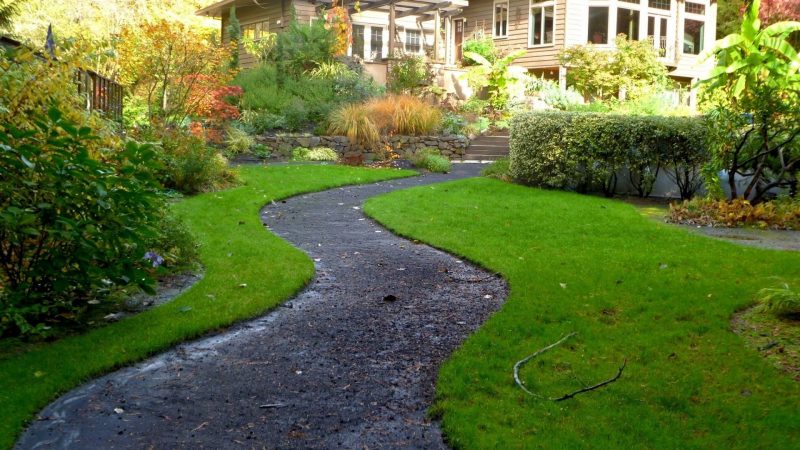
Like most pests, armadillos seek out dark and safe spaces to nest. They are usually found burrowed underground, and you’ll most likely encounter them in or around your yard.
Here’s how to get rid of armadillos in your yard, under your deck, and in your flower beds:
- In your yard. Use a humane cage trap that is large enough to catch an armadillo. Usually, an ideal size for an armadillo trap is about 32 inches to 42 inches in length and 12 inches in height. When successfully captured, relocate your armadillo immediately to at least 2 miles to 5 miles away from your residence, preferably to a forested environment where it can thrive and be safe. You may also want to ask your local wildlife center for recommendations.
- Under deck. Sprinkle granule repellents at the base of the deck to start to build a strong aversion. Do this for several days, then weekly, and finally refresh when it rains or if the armadillos begin to come back.
- In flower beds. Use castor oil to repel the armadillos by making their food source taste unpleasant. You can also place a predator’s urine in several places in your garden.
How to Trap an Armadillo?

In some situations, repellents won’t work and you may find that you need to trap an armadillo for safe removal.
Here’s how to trap an armadillo:
Step 1: Confirm it’s legal to trap armadillos in your location.
Step 2: Get a sizable trap to hold. Contain the armadillo as you relocate it.
Step 3: Build a wooden barrier walkway to guide the armadillo into the trap.
Step 4: Get bait such as worms, fish, or overripe fruit. Set the trap near the burrow entrance.
Step 5: Once you catch the armadillo, move it 2 miles (3.2 km) away from your home or you may call the local wildlife center.
For more information on how to trap an armadillo, please watch the video below:
How to Get an Armadillo Out of Its Hole?
As mentioned above, armadillos will typically burrow underground to nest, and if you want to get rid of an armadillo, it’s best to get it out of its hole first.
To get an armadillo out of its hole, try the following:
Step 1: Spray the area around the burrow with castor oil to repel the armadillo from its home.
Step 2: Spread natural granular repellents. You should do this within and around the den-like with a mixture of non-toxic 10% Ricinus communis (Castor Bean) oil and 90% attapulgite chromite clay.
Step 3: Apply permethrin inside and outside the burrow and if the armadillo is still present after ten days, use permethrin pro.
Step 4: You can also flood the borrow with water using a hosepipe.
Can You Shoot an Armadillo?
You can shoot an armadillo as they are not bulletproof, but you can still control their population using different methods. You may want to try using homemade repellants to remove their food supply in your area, a cage trap to capture and relocate them, installing fences that are high and deep enough to block them from entering your property, and other methods that may suppress them from coming back.
What Will Repel Armadillos?
The following are some of the best products from Amazon that you can use to trap or repel armadillos:
Best Armadillo Traps
Havahart 1089 Collapsible One-Door Live Animal Cage Trap
- Ideal for catching raccoons, stray cats, woodchucks, groundhogs,...
- Made to last resists rust and corrosion; Dimensions: 32 inch x 10...
- One spring loaded door
- Collapsible design is ideal for space saving storage
- Trigger rod is located outside of the trap so animal cannot...
Havahart Cage Trap is a collapsible trap that’s ideal for catching nuisance pests like armadillos. The trigger rod is located outside the trap to ensure that the trapped armadillo does not damage it.
This trap is both corrosion and rust-resistant-free too, hence, it will last long.
ANT MARCH Live Animal Cage Trap
- Constructed of sturdy rust-resistant wire mesh with steel...
- The size of the mesh openings has been designed and adjusted to a...
- This animal trap is easy fully open or collapse, super simple...
- The attached gloves can effectively protect the user's safety...
- Live animal trap cage is good ideal designed for large rodent...
ANT MARCH Live Animal Cage Trap provides a humane method of capturing and re-homing armadillos. It’s easy to set up, plus it features a dependable, quick-set mechanism.
Also, the spring-loaded door ensures that you will catch most of the armadillos and suffer few escapes.
Best Armadillo Repellents
Bonide Products 2361 Repel Granules Animal Repellent
- 3 lb., Repels All Granules
- Repels nuisance animals including skunks, raccoons, squirrels,...
- Repels through smell, taste and irritation of eyes, and nose
- Formula will not harm animals
- Granules last up to 60 days
Bonide animal repellent works by repelling armadillos through their smell and taste. It also causes their eyes and nose to become irritated, thus, repelling the animals from your garden.
The granules contained in the formulation will not harm any animals, and the product is safe to use even if you have pets and children.
Bonide (BND690) Molemax Mole & Vole Burrowing Animal Repellent
- MOLEMAX Mole & Vole Repellent keeps animals out of your garden!...
- Designed for use on lawns, gardens, flower beds and more! When...
- Castor oil acts as a natural irritant to burrowing animals,...
- When used as directed, the long-lasting ready-to-spray solution...
- The product arrives conveniently ready-to-spray in an easy-to-use...
This product protects your lawn from pests that like to burrow.
It contains castor oil, a natural repellent, and works by penetrating deep within the soil up to where armadillos burrow. It comes in a ready-to-spray container, and a single application can last about three months.
How to Repel Armadillos Naturally?
While armadillos have limited natural predators such as dogs, coyotes, feral pigs, and foxes, you can repel them by using these homemade repellents below:
- Mothballs
- Castor oil
- Ammonia
- Epsom salt
- Pine cleaner
- Cayenne pepper and water solution
Homemade Armadillo Repellents
To make your own natural homemade armadillo repellent, you need industrial-grade castor oil and a liquid dish detergent.
Next, follow the steps below:
Step 1: In a container, mix 16 ounces (473.18 ml) of castor oil with 4 ounces (118.29 ml) of liquid dish detergent.
Step 2: Fill the rest of the container with water. Mix well.
Step 3: Use a garden hose sprayer and spray the mixture all around your garden.
Repeat the procedure once every month and after it rains.
Alternatively, you can sprinkle crushed pepper flakes around your garden to repel the armadillos.
How to Keep Armadillos Away?
To keep armadillos away, use the methods mentioned above, including:
- Trapping
- Fencing
- Strong-smelling repellents like ammonia
- Clear small insects using insecticides
If, after using these methods and you still notice armadillo activity, call in pest control experts to take care of your armadillo problem.
List of Sources
The Center for Food Security & Public Health. (2013). Chagas Disease. Iowa State University.
ARMADILLO TRAPPING – HOW TO CATCH ARMADILLOS WITH TRAPS. Wildlife Removal USA.
Boyle, R. (2013). Gallery: Animals Can Suffer Human Diseases Too. Popular Science.
Mengak, M. (2012). Natural History Series: Nine-Banded Armadillo. University of Georgia Extension.
- How to Get Rid of Copperheads | Practical Guide - August 27, 2023
- How to Get Rid of Corn Snakes | What Makes Them Aggressive? - August 27, 2023
- How to Get Rid of Alligators | Safety Measures and Removal Methods - July 16, 2023




